Monthly Archives: December 2014
Happiness is an Art
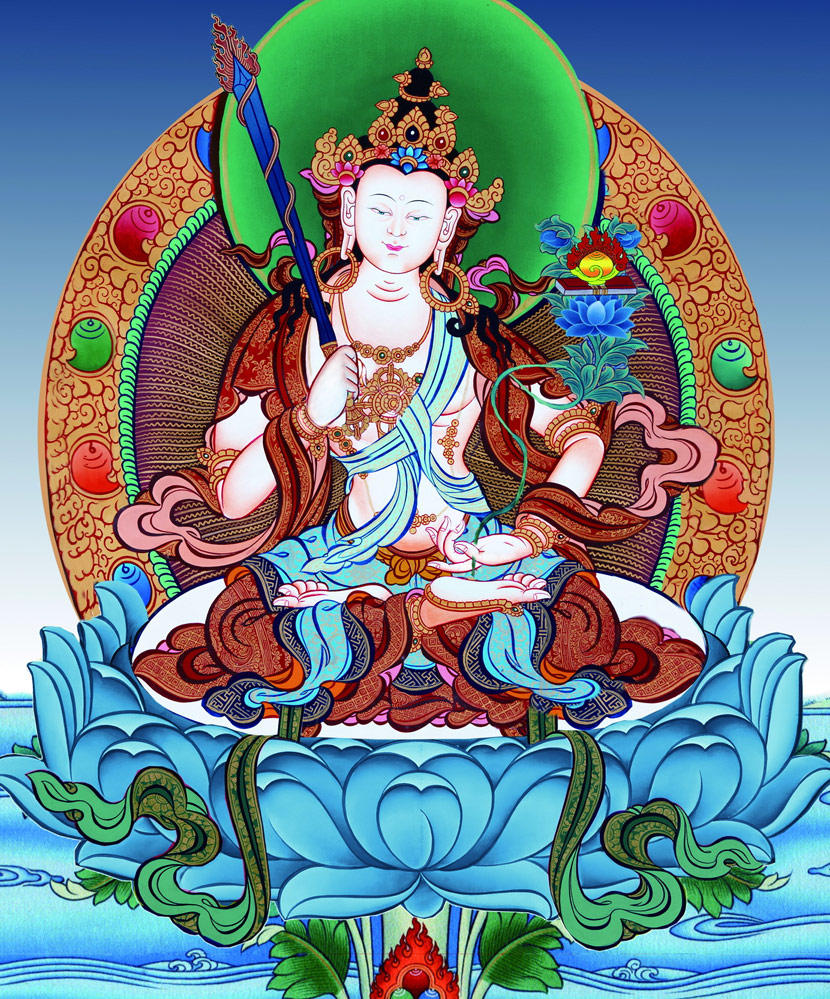
Akasagarbha: The Bodhisattva of Infinite Happiness
“Whether this moment is happy or not depends on you. It’s you that makes the moment happy. It’s not the moment that makes you happy.
With mindfulness, concentration and insight, any moment can become a happy moment.
Happiness is an art.”
Thich Nhat Hanh

Follow traditionalartofnepal.com on WordPress.com
The Fascinating History of Himalayan Masks
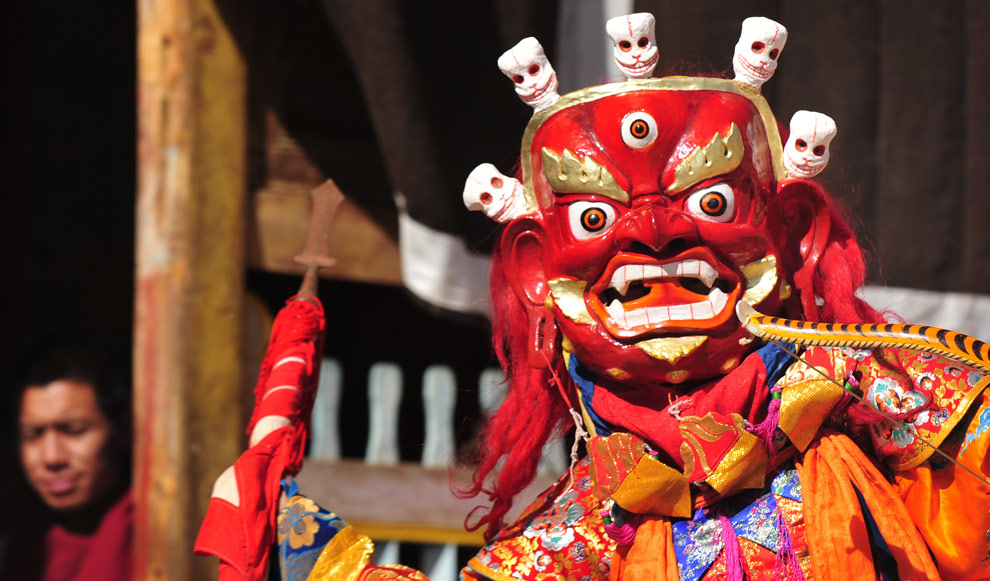
The Origin of Himalayan Masks Cult
Nepalese and Tibetan Masks are one of the symbols that better represent the culture and traditions of people living in the Himalayan region.
The ritual of wearing masks is very old and it comes from animists Himalayan tribes used to worship spirits of nature and guardians of these majestic mountains.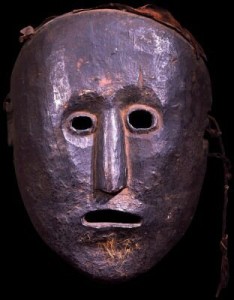
The Shamans of these tribes used to wear masks during rituals they use to perform in order to protect the village, heal diseases, practice exorcisms or other purposes.
Masks supposedly had a very important functions in the social life of these community as they were used also during theatrical representations and ceremonies dedicated to ancestors.
Hindu and Buddhist cultures, that became dominant in the surrounding regions, slowly replaced the myths of this shamanic cult.
However some of the old costumes survived.
Even spirits and demons were adopted by the Buddhist tradition and some of them became wrathful protectors of the Buddhist doctrine.
Padmasambhava and the Rise of Buddhism
Buddhism entered Tibet in the 7th century AD. According to Buddhist mythology the main actor of the transformation of Tibet was Padmasambhava. A famous Tantric Buddhist master from the Swat Valley (today Pakistan) and founder of the first Tibetan Buddhist monastery at Samye, south central Tibet.
Padmasambhava was called by the first Emperor of Tibet to defeat the ancient mountain gods of the old animist cult.
In accordance with the Tantric principle of redirecting negative forces toward spiritual awakening, Padmasambhava converted the wrathful deities, convincing them to become defenders of the new faith.
He is also said to have introduced at Samye Temple the so called Vajra Dance. A dance that takes place in a monastery where masked monks in deep meditation perform rituals that last for three days.
This practice continues today under the name “Cham” and it celebrate Padmasambhava’s conquest over the indigenous cult and their deities.
In Nepal this dance tradition takes a form known as Mani Rimdu: spectacular and colorful masked dances performed during different religious festival.
Iconography of Tibetan Masks
Considering the polytheist nature of both Hindu and Buddhist traditions the deities represented by Tibetan masks are numerous: Shiva, Bhairava, Ganesh, Mahakala, Garuda and Varahi are the most famous.
Some of the deities are depicted using animals like the Lion associated with Sima or the Tiger symbolizing Duma.
However the images must follow the rules and prescriptions described in old manuals and iconographic books.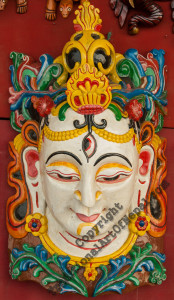
There are several books that set those guidelines, one of the earliest is from the first half of the 15th century. All the masks display a common element: the open third eye mark on the forehead.
The style of Tibetan and Nepalese Masks is characterized by elaborate pointed crowns with skulls, various head-bands, earrings and many other colorful elements.
These decorations not only reflect religious and symbolic aspects but also add a powerful imagery and a peculiar and fascinating look.

Follow traditionalartofnepal.com on WordPress.com
The Thangkas of The Tibetan Medicine
Created between 1687 and 1703, these thangka paintings were commissioned by the fifth Dalai Lama’s regent, Desi Sangye Gyatso, who stepped in as interim ruler of Tibet after the Dalai Lama died in 1682.
The paintings constitute the charts of The Blue Beryl, a text written by Gyatso as commentary of the Four Tantras, the fundamental text of Tibetan medicine.
The main reason that moved Gyatso to create this illustrations was to avoid confusion when interpreting old texts.
Gyatso placed great value on the accuracy of the illustrations depicting such things as the use of omens and dreams for making diagnoses, hundreds of medicinal herbs and medical instruments, and fabulous diagrams of human anatomy.
As stated by the International Academy for Traditional Tibetan Medicine (IATTM) “one of the unique features of Traditional Tibetan Medicine is that it contains a comprehensive philosophy, cosmology, and system of subtle anatomy with associated spiritual practices”.
Today these Thangkas constitute a fundamental piece of educational art that interweave Tibetan Buddhist traditions with centuries-old medical knowledge.
The first painting occupies a privileged place among the others which, in a certain sense, derive from it. It represents the celestial city of the Buddha Bhaisajyaguru, Master of Remedies “Surdasana”. The city is surrounded by four “mountains”. Further more it is square with the palace at its center. The palace, like the whole locality, is an emanation of Buddha Bhaisajyaguru. Its plan evokes a Mandala, with its square enclosure and its four gates oriented in the cardinal directions.
The thangkas not only depict the Buddhist background of Tibetan medicine but also the diagnostic schemes of pulse and urine analysis, picturesque representations of dietary and behavioral advice for treating illnesses, as well as anatomical knowledge,charts for moxabustion, and the elaborate “materia medica” of Tibetan pharmacology.
In fact Twenty-one Thangkas of the original series are devoted to more large human figures illustrating anatomical structures.
The first fifteen compositions have a top register. The registers contain the four main sequential topics relating to the origin myths and state narrative on the Tibetan History of Medicine of the late 17th century.
There are four main sequential topics contained in the registers:
– Medicine Buddha and early Indian Gods and Rishis.
– The Lineage of the Four Medical Tantras.
– The Yutog Nyingtig Lineage.
– The Deities and Protectors of the Yutog Nyingtig.

Follow traditionalartofnepal.com on WordPress.com
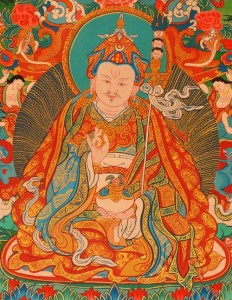
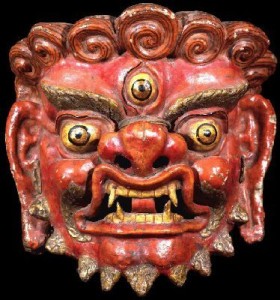
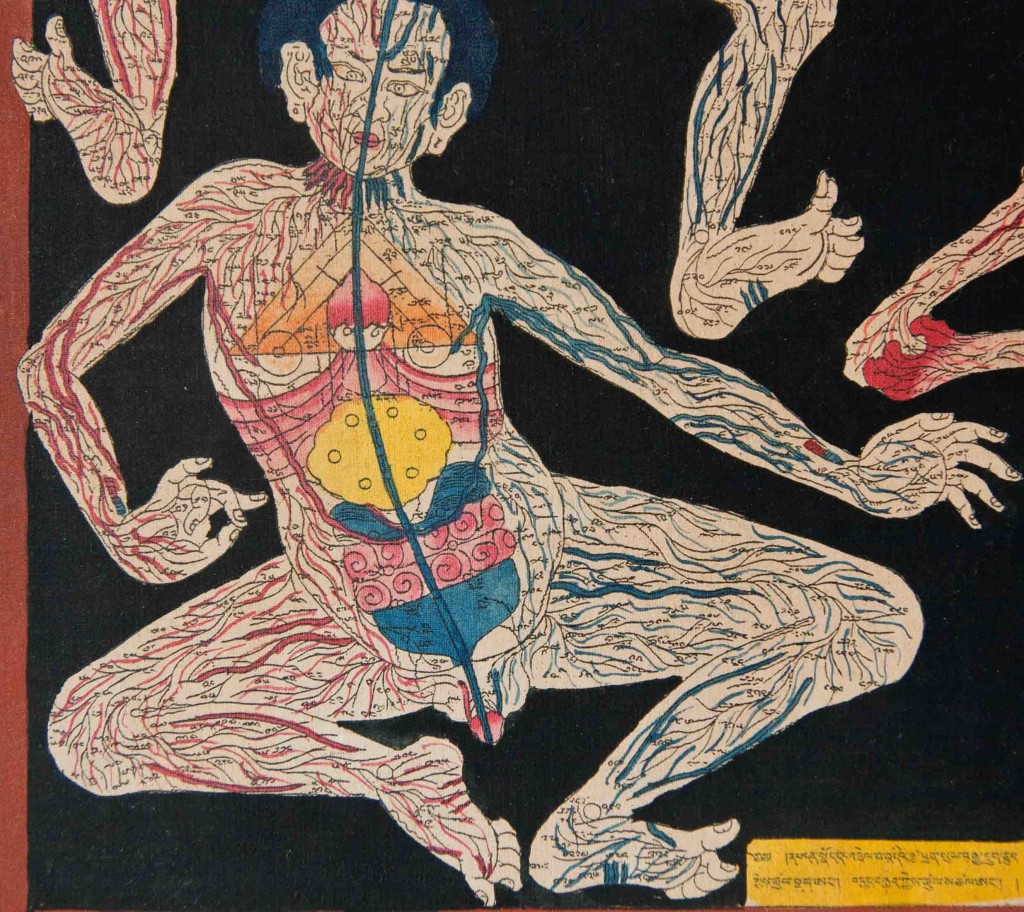
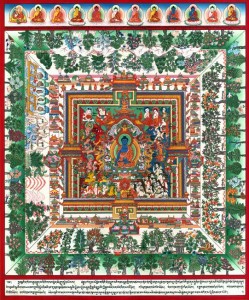
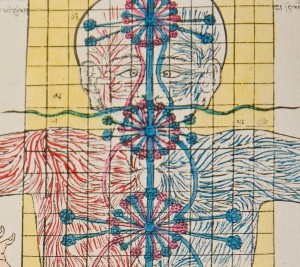
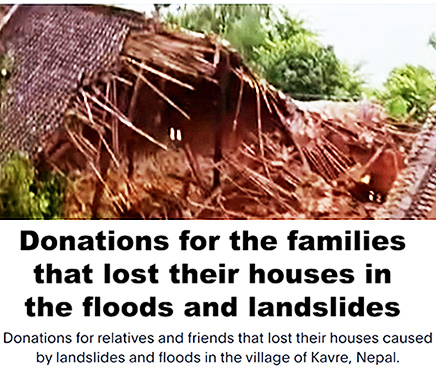
 Kalachakra Mandala
Kalachakra Mandala 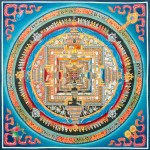 Kalachakra Mandala Auspicious Symbols
Kalachakra Mandala Auspicious Symbols 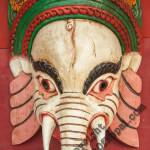 Ganesh Mask Design #02
Ganesh Mask Design #02 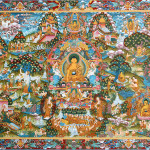 Life of Buddha Master Thangka
Life of Buddha Master Thangka 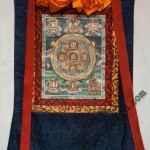 Silk Frame #02
Silk Frame #02 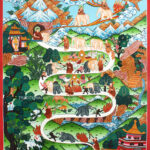 Samatha Meditation Thangka
Samatha Meditation Thangka 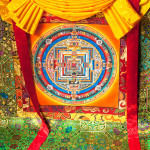 Modern Design Brocades
Modern Design Brocades 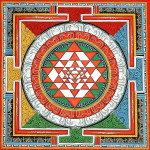 Sri Yantra Mandala
Sri Yantra Mandala 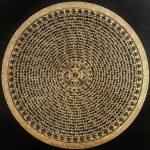 Yin Yang Mantra Mandala
Yin Yang Mantra Mandala